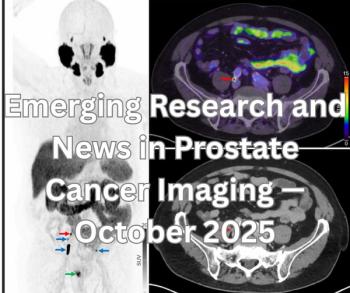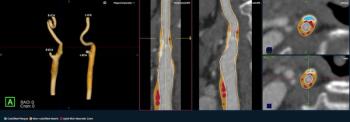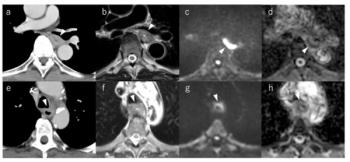
SPECT advances propel nuclear medicine at SNM's Orlando show
This month's Society of Nuclear Medicine meetingin Orlando was proof positive that the recent slump in gamma camerapurchasing has not had a pronounced effect on technological innovation.Despite a plunge in orders that began late last year,
This month's Society of Nuclear Medicine meetingin Orlando was proof positive that the recent slump in gamma camerapurchasing has not had a pronounced effect on technological innovation.Despite a plunge in orders that began late last year, nuclearmedicine vendors continue to churn out upgrades and new productsat a scintillating pace.
Taking center stage in many vendor booths were simultaneoustransmission-emission techniques for removing artifacts from cardiacSPECT images. Vendors with work-in-progress techniques includedADAC Laboratories, Elscint, Siemens and Toshiba. Picker Internationalreceived Food and Drug Administration clearance for its STEP techniquejust days before the meeting (SCAN 6/15/94).
Other important developments included F-18 fluoro-deoxyglucoseSPECT imaging with high-energy collimators, a technique that hasbeen touted as the poor man's PET. While many vendors displayedwork in 511-KeV FDG SPECT imaging, the jury is still out on whetherits image resolution is good enough relative to PET to make thistechnology a viable product.
The following is a brief rundown of new products and developmentson display at the meeting:
ADAC Laboratories
** ADAC is placinghigh hopes on Vantage, its version of simultaneous transmission-emissionattenuation correction for the Genesys Vertex adjustable dual-headgamma camera. The work-in-progress technique uses two externalline sources of radiation mounted on Vertex's gantry for use whenthe camera is in the 90º configuration (SCAN 6**1**94). Theline sources scan across the patient's body during an exam toprovide a map of attenuation artifacts.
ADAC plans to file for FDA 510(k) clearance for Vantage thismonth, according to the Milpitas, CA, company. ADAC hopes to havethe product on the market in time for this year's RadiologicalSociety of North America meeting.
** While ADAC is gaining market share, the company expectsthe U.S. gamma camera market to be down significantly in 1994compared to last year, according to president and co-CEO DavidLowe. The market will be down $100 million this year comparedto last, with total annual orders of about $280 million, Lowesaid.
AccSys Technology
** AccSys of Pleasanton, CA, featured panelsdiscussing its technology for using radio-frequency linear acceleratorsto produce PET radioisotopes (SCAN 11492). The company's PL-7linear accelerator is cheaper and more compact than a cyclotronand can produce the full range of PET radioisotopes, accordingto AccSys president and CEO Robert W. Hamm.
AccSys has adapted linear accelerator technology from otherapplications for medical uses. The company's 7-MeV machine requiresthat only the target be shielded, making siting easier. AccSyshopes to have a prototype accelerator in beta testing by the endof this year.
Amersham HealthcareMedi-Physics
** A therapeutic radiopharmaceuticalheld the spotlight at the AmershamMedi-Physics booth. Metastronis indicated for palliation of pain caused by cancer that hasmetastasized to the bone. The strontium-89-based agent has showndramatic results since its release last year, according to theArlington Heights, IL, company.
** AmershamMedi-Physics also displayed panels describing theresults of clinical studies using Myoview, a technetium-basedagent for heart function and perfusion. The company is expectingFDA clearance of the product soon.
Biomira
** Biomira's booth featured clinical results from trialsof its Tru-Scint monoclonal antibody agents for treating cancer.
Care Wise Medical Products
** Care Wise of Morgan Hill, CA,displayed its C-trak system, a gamma ray-detecting device usedby surgeons to identify radiolabeled cancerous tissue. The mainapplications for C-trak are the detection of malignant melanomasand colorectal and ovarian cancers. The probe works with a varietyof different monoclonal antibodies.
CIS-US
** CIS-US of Bedford, MA, unveiled I-131-MIBG, a functionaliodine-131-based agent for localizing pheochromocytoma and neuroblastoma.The agent was approved by the FDA in March.
Cytogen
** Cytogen is attempting to sever its distribution relationshipwith Knoll Pharmaceutical for its OncoScint monoclonal antibodyimaging agent (SCAN 42094). The proposed move has received approvalfrom the boards of both companies and is expected to be finalizedshortly, according to group vice president James Geddes.
** Princeton, NJ-based Cytogen is on the verge of FDA clearancefor repeat administrations of OncoScint, which is currently limitedto a single use because of concerns about human anti-mouse antibody(HAMA) response.
Diatech
** Peptides promise to be an effective alternative tomonoclonal antibody-based imaging agents, and Diatech is developinga range of technetium-based peptides for imaging tumors, thrombi,atherosclerosis and infectious diseases (SCAN 63093). Diatech,of Londonderry, NH, presented clinical research indicating thatits thrombi imaging agent may also be useful for detecting braintumors.
Du Pont Merck Radiopharmaceuticals
** Du Pont has been anxiouslyawaiting FDA approval of its Neurolite brain SPECT tracer, andpanels in the vendor's booth hinted as to the forthcoming arrivalof a new brain imaging agent.
** Other panels touted Cardiolite, the company's myocardialperfusion SPECT agent. Cardiolite has been a major success forDu Pont since its introduction in 1991 (SCAN 11691), but thecompany will soon have to fend off competition from AmershamMedi-Physicswhen that company receives the FDA's go-ahead for its Myoviewagent.
Elscint
** Top attraction at the Israeli vendor's exhibit wasthe release of digital versions of its Apex Helix and Apex SPX-6HRgamma cameras. Elscint's technology digitizes the signal fromeach photomultiplier tube for improved resolution, according toNathan Hermony, manager of Elscint's nuclear medicine division.The vendor is offering digital as an option to buyers of Helixor SPX-6HR cameras at a price of $20,000 to $30,000.
** Elscint also unveiled a new nuclear medicine workstation,XPert (SCAN 6194). XPert is a Pentium-based platform that complementsthe vendor's Apex SPX line of workstations.
** Elscint jumped on the simultaneous transmission-emissionbandwagon with an artifact correction technique for the CardiaLfixed 90º-angle dual-head camera. The technique, shown asa work-in-progress, involves mounting a line source of radiationon the gantry of CardiaL to remove artifacts generated by theinferior wall of the heart during cardiac SPECT.
** 511-KeV imaging of F-18 fluorodeoxyglucose is another hottopic in nuclear medicine, and Elscint used a panel display todescribe its work in the area.
GE Medical Systems
** Among the highlights at GE's booth wasQuest, a lower tier PET scanner unveiled at the RSNA meeting lastyear (SCAN 122993). GE acquired exclusive distribution rightsto the scanner from UGM Medical Systems. The scanner lists at$1.6 million.
** GE also announced that it has appointed a new head of itsnuclear medicine and PET division. James S. Shepard replaces VerneSharma as global manager of nuclear medicine and PET, accordingto the company.
** The Milwaukee vendor displayed its GE Nuclear Medicine Environment(Genie) workstation, an image processing and review software programthat is being developed by GE and ISG Technologies (SCAN 121593).
** Also in the software realm, GE showed its progress in upgradingits Advantage Windows CT and MRI review workstation station todisplay nuclear medicine images.
Immunomedics
** The monoclonal antibody developer suffered amajor setback just a week before the conference when the FDA issueda letter stating that the product license application for itslead product, ImmuRAID-CEA, was "nonapprovable" (SCAN6194). Immunomedics chairman Dr. David M. Goldenberg declinedto state the FDA's reasons for issuing the letter, but he saidthe Morris Plains, NJ, company is working with the FDA to addressthe agency's concerns about the application.
** ImmuRAID-CEA's difficulties have prompted a shareholderlawsuit against the company. The complaint was filed in U.S. DistrictCourt in New Jersey.
Mallinckrodt Medical
** The show-stopper for Mallinckrodt wasOctreoScan, a peptide-based imaging agent that won FDA approvalon the eve of the meeting (SCAN 61594). Mallinckrodt, of St.Louis, made the most of its good fortune, devoting ample boothspace to the new product.
Medasys
** Medasys revealed that it plans to merge with DigitalDesign Medical Systems, a developer of gamma cameras and imageprocessing workstations (see story, page 3).
Neoprobe
** Neoprobe is developing a technology that detectsradiotracer-labeled monoclonal antibodies during surgery to guidephysicians to cancer sites. The Dublin, OH, company's radioimmunoguidedsurgery system (RIGS) is awaiting FDA approval of CC49, the radiolabeledmonoclonal antibody the system is designed to detect (SCAN 22493).
Park Medical Systems
** Digital gamma camera developer Parkmade its first SNM appearance since reorganizing its corporatestructure earlier this year (SCAN 21694). Park's lead product,the Isocam single-head digital gamma camera, was on display inthe Framingham, MA-based company's booth.
** Clinical trials with Park's digital dual-head camera, Isocam2, were emphasized at the display. C. Richard Mullen, formerlysenior vice president of Intermagnetics, had his first opportunityto represent Park's interests since his June 1 appointment aschief executive.
Picker International
** The main attraction at Picker's boothwas its simultaneous transmission-emission protocol (STEP) forclearing up artifacts during cardiac SPECT (SCAN 6**1**94). LikeMallinckrodt, Picker received FDA clearance for STEP just beforethe conference, making Picker the first vendor on the market witha simultaneous transmission-emission product.
** Picker also showcased its XP line of digital gamma cameras,which were introduced at last year's RSNA meeting and which beganshipping in January (SCAN 121593).
** Like other vendors, Picker is developing a capability forFDG SPECT imaging using 511-KeV collimators, and displayed informationabout the technique as a work-in-progress.
Positron
** This PET developer highlighted its Posicam HZ seriesof scanners, which made their SNM debut at this year's meeting.While Medicare reimbursement of PET is on the horizon, Positron,of Houston, is placing new emphasis on international orders, courtesyof its distribution agreement with Elscint (SCAN 63093).
Scinticor
** Scinticor displayed the most recent upgrade forits SIM-400 cardiac SPECT system. Scinticor has retrofitted anindexing chair to the unit, allowing it to perform upright perfusionstudies. The system improves resolution by keeping the detectorheads in contact with the patient's body, according to the Milwaukee-basedcompany.
Siemens Medical Systems
** The hot ticket at the Siemens exhibitwas ECAT ART, the vendor's new PET scanner, which Siemens willmarket for less than $1 million (SCAN 61594). ECAT ART usesslip ring technology that reduces the number of detectors in thecamera.
** Siemens announced that it is planning to manufacture itsown sodium iodide crystals for gamma camera detectors. There iscurrently only one source for sodium iodide crystals in the world,according to the company. Siemens is importing crystal-makingtechnology and personnel from the Ukraine and plans to set upmanufacturing facilities at the nuclear medicine division's headquartersat Hoffman Estates, IL.
** Siemens' version of simultaneous transmission-emission attenuationcorrection was also displayed at the booth. Siemens debuted itsversion of the technology at last year's SNM meeting and has filedfor FDA 510(k) clearance to use the technique on its dual-headand triple-head cameras.
** FDG SPECT imaging with 511-KeV collimators was shown asa work-in-progress for the Multispect 2 gamma camera.
Sopha Medical
** Sopha made a pitch for more market share atthis year's meeting by rolling out Sophycamera DST-XL, a new versionof its adjustable dual-head camera (SCAN 6**1**94). SophycameraDST-XL features larger detector heads than Sophycamera DST andis optimal for whole-body and large-organ imaging, according tothe company.
** The French gamma camera maker also announced that it hasacquired a 51% stake in TSI, a French telemedicine and digitalimaging company. The acquisition gives Sopha access to image archivingand transmission capabilities, according to the company.
** Sopha unveiled a new corporate identity campaign that playsup the prominence of CEA-I, its parent company. Sopha also celebratedthe installation of its one-thousandth gamma camera system.
Squibb Diagnostics
** Panels in Squibb's exhibit touted thecompany's range of SPECT and PET agents, including CardioTec,a technetium-based myocardial perfusion agent; CardioGen, a rubidium-82PET tracer; and MDP-Squibb, a bone imaging agent.
Summit Nuclear
** Summit displayed its line of digital gammacameras, including the Vision FX-40 and FX-80 series, the dual-headT-22 and single-head 1024-RZ single-head camera.
** New software was highlighted for the cameras. It improvesindividual PMT and regional energy calibration, according to GaryEnos, vice president. With the upgrade, the cameras gain processingcapabilities needed for routine simultaneous thallium**technetium-sestamibiimaging, Enos said.
Syncor International
** Radiopharmacy giant Syncor of Chatsworth,CA, debuted Secure Safety Insert System, a container for radiopharmaceuticalunit-dose kits that allows Syncor customers to return used syringesto the company for disposal.
** Syncor has seen an erosion in radiopharmaceutical pricessince last year, according to Gene McGrevin, president and CEO.Over the last nine months, radiopharmaceutical prices are off5%, he said. Syncor reduced the price of Du Pont's Cardioliteby 10% to 12% in February to improve the product's competitiveposition relative to thallium-based agents, he said.
Toshiba America Medical Systems
** Visitors touring the Toshibabooth were treated to a look at the vendor's new dual-head camera,GCA-7200, which made its SNM debut at the Orlando meeting afterbeing shown in a video presentation last year. Toshiba began deliveriesin March and has shipped 16 systems to date, according to thecompany.
** Quantification is the future of nuclear medicine, accordingto Toshiba, and the Tustin, CA, company used panel displays todescribe its work in the area. Toshiba is developing a softwarepackage to enable quantification of nuclear medicine images (SCAN6194). The package includes Transmission CT (correction technique),a simultaneous transmission-emission artifact correction technique.
** The slump in gamma camera purchasing appears to be improving,according to Steve Sickels, manager of Toshiba's nuclear medicinebusiness unit. While the first two months of 1994 were down significantly,sales bounced back in March and were close to last year's levels,he said. The single-head segment, however, continues to be hammereddue to dual-head sales, he said.
Trionix Research Laboratory
** The enigma of the nuclear medicineindustry, Trionix reestablished its presence at the SNM meeting.The Twinsburg, OH, vendor emphasized its Triad XLT 20 triple-headcamera, with 20 x 15-inch detector heads.
** Trionix displayed work-in-progress developments in 511-KeVFDG SPECT imaging, which the vendor will accomplish using standardcollimators.
** Privately held Trionix disclosed selected financial resultsto dispel what CEO Chun Bin Lim said are false rumors of his firm'sdecline. Trionix generated $27.8 million in revenue in 1993, upfrom $18.3 million in 1992. Sixty systems were shipped last year,compared with 38 in 1992 and 31 in 1991.
Newsletter
Stay at the forefront of radiology with the Diagnostic Imaging newsletter, delivering the latest news, clinical insights, and imaging advancements for today’s radiologists.

































